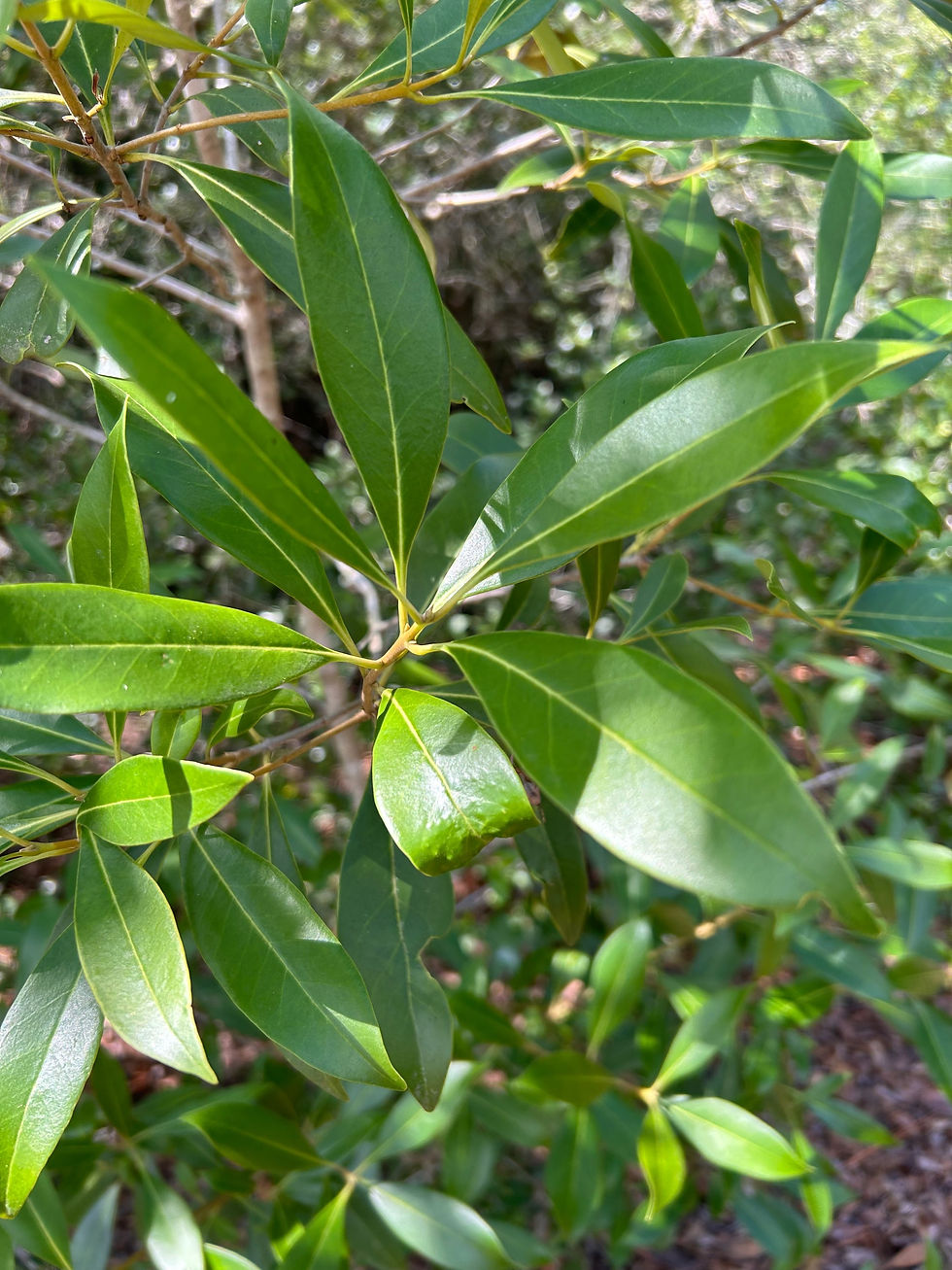Osmanthus americanus (Previously known as)
* Current scientific name: Cartrema americana
* Common names: American olive, wild olive, devilwood
Osmanthus americanus was reclassified to the genus Cartrema due to genetic differences identified through further research.
General Information
- Status in Florida: Native
- Native Habitat: Coastal areas, hammocks, and upland woodlands
- Native States: Florida, Georgia, Alabama, Mississippi, Louisiana, Texas
- Growing Zones: 8A, 8B, 9A, 9B
- Size at Maturity: 8-15 feet tall, 5-10 feet wide
- Phenology: Evergreen
- Life Cycle: Long-lived perennial
- Growth Rate: Moderate
- Growth Habit: Shrub
- Bloom Season: Spring
- Bloom Color: White
- Fruit Color: Black
- Growth Conditions
- Sunlight Requirements: Full sun to part shade
- Soil Texture: Well-drained, sandy or loamy soils
- Soil pH: Slightly acidic to neutral
- Moisture Requirements: Average moisture
- Tolerance to Salt Spray: Moderate
- Keystone Plant: No
Landscape Considerations
- Recommended Landscape Uses: Hedge, screen, specimen plant, coastal gardens
- Maintenance Tips: Prune to maintain shape, may need occasional watering during drought
- Considerations: Thorns may be a consideration for some landscapes
- Hurricane Wind Resistant: Yes
- Erosion Control: Yes
- Nitrogen Fixing: No
Other Information
- Edible: Yes (the seeds and leaves can be used to make a spice, but should be used with caution)
- Pet Safe: Caution (contains compounds that can cause skin irritation in some pets)
- Deer and Rabbit Resistance: Yes
- Historical Medicinal Uses: Used historically as a stimulant, for digestive issues, and for pain relief
- Florida Native Companion Plant: Ilex vomitoria, Chasmanthium latifolium
- Wildlife Benefit: Attracts pollinators, particularly bees
- Caterpillar Host Plant: No
- Propagation: Seed, cuttings



















